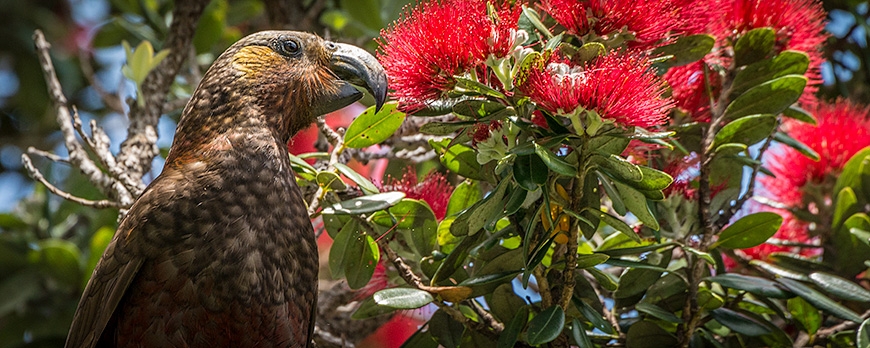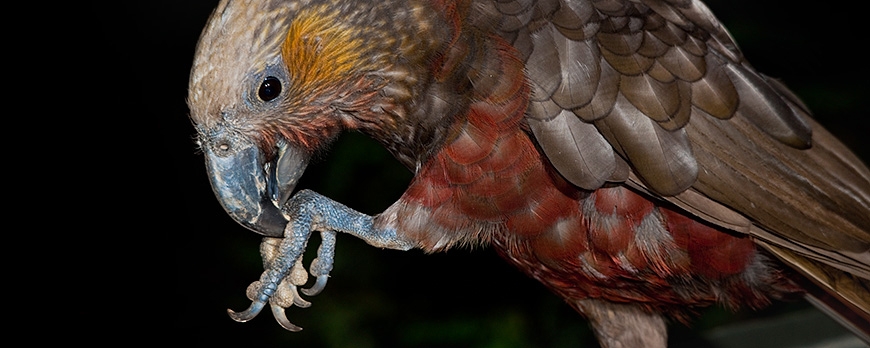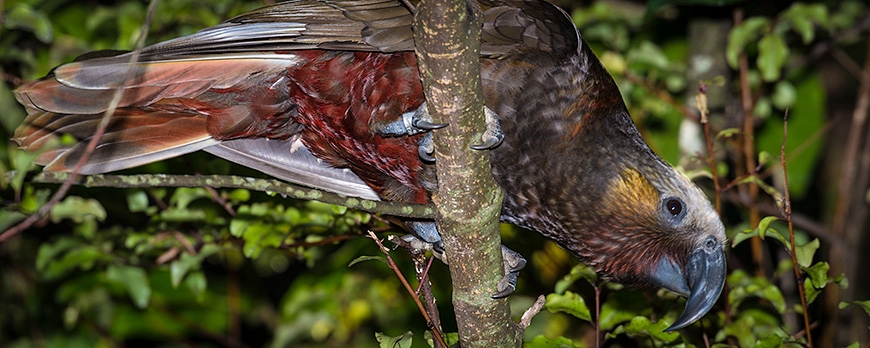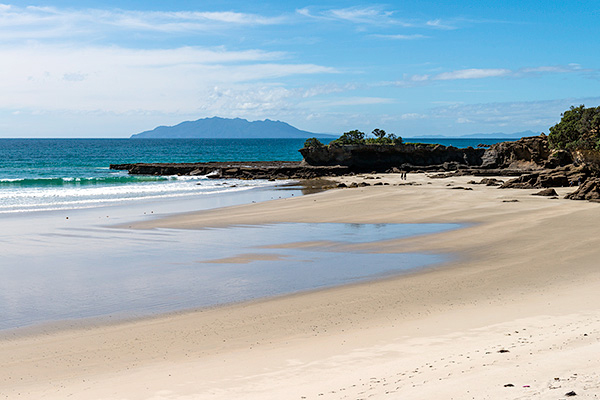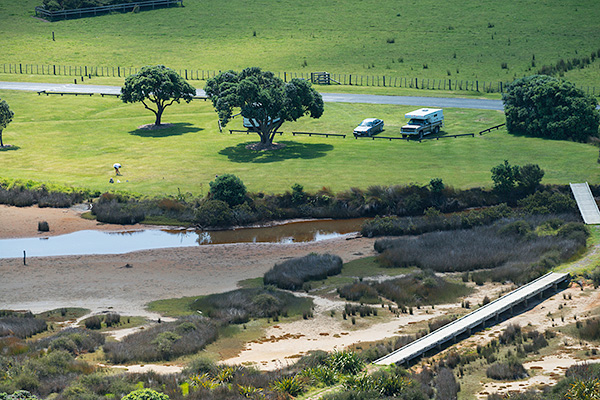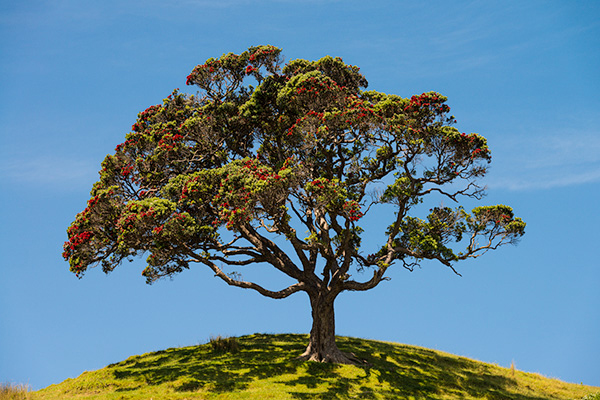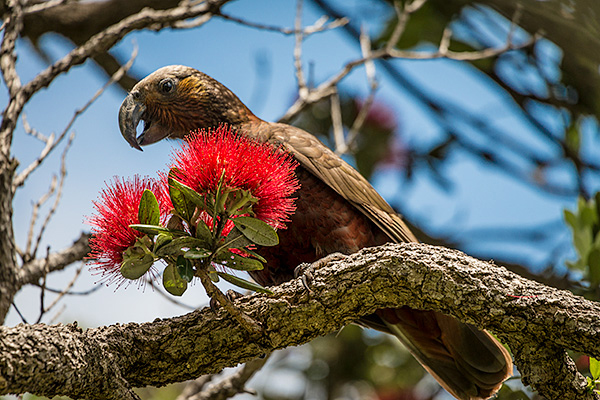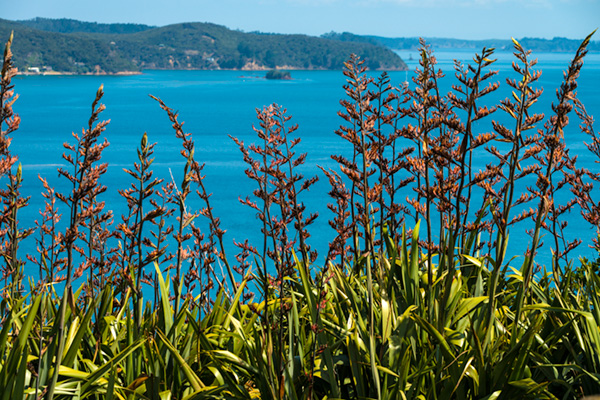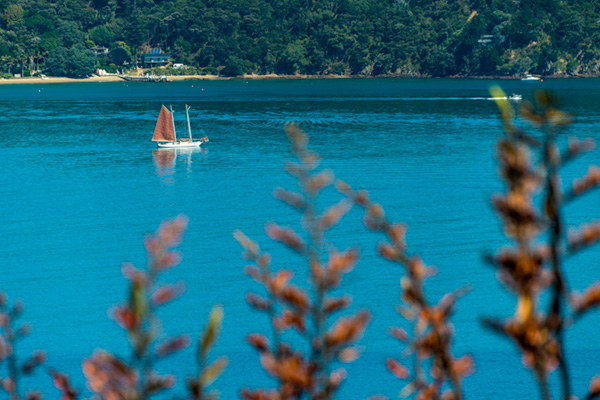Kaka in the Wild
The large brown bird perched swaying in the breeze at the top of a dead tree by the side of the house. Tuis and other local birds obviously affronted by its presence, were noisily buzzing the stranger in an attempt to drive it off. This was similar to the mobbing a Morepork gets if it dares to brave the open during daylight hours. But this was no Morepork. At that time, we'd not seen such a bird before despite some fifteen years living in and around the Waitakere Ranges and exposure to the many native birds that live there.
We'd been attracted by a cacophany of bird noise only to be confronted by this unfamiliar bird. It was definitely a parrot and we thought it was a native, but here in Titirangi? Having had enough of the aggressive attention it was attracting, the brown parrot soon flew off making a loud ka-aa, ka-aa, ka-aa, as it vanished in the direction of Auckland city.
Of course, a little research in our Birds of New Zealand book, revealed the stranger to be a Kaka. Since that time about nine years ago we've seen and photographed many Kaka in outdoor covered aviaries in places such as Auckland Zoo and Rainbow Springs, where you can get very close to them. Visits of Kaka to Auckland city, though not common, do occur. In fact, in 2012 there were three sightings reported in Titirangi including one feeding on a Frangipani bush in a private garden.
It wasn't until late last year (2013) that we had our second experience of Kaka in the wild and that was at Tawharanui Regional Park. Kaka have introduced themselves to pest-free Tawharanui, apparently from their offshore island sanctuaries where they flourish. Most likely from Little Barrier Island, the 24km distance only a short hop for the long flying Kaka.
| Anchor Bay, Tawharanui, with Little Barrier Island in the background. Kaka freely travel between the islands. In fact, the Kaka of Hen and Chickens, Little Barrier and Great Barrier Islands are regarded as one population. |
Where we sighted a number of Kaka was along the South Coast Track. Not far from where you pass through the automatic gate is a lagoon and a car park and here is the start of this track. An information kiosk on the left holds a supply of maps of the park walks, you may need one.
| The start of the South Coast Track. Tracks are well marked and maintained. |
| Mid December and the Pohutukawa are in full flower. |
Up a grassy slope is a large solitary Pohutukawa, here we saw our first Kaka and lots of Tui and Bellbirds. The Kaka was feeding on the Pohutukawa flowers and appeared unfazed by our presence. It did however, nearly always manage to keep some foliage between itself and the camera... patience was required.
| Kaka obtain all their food from trees - nectar, seeds, fruit, honeydew and sap especially, also wood-boring invertibrates uncovered by ripping away bark with their powerful beaks. |
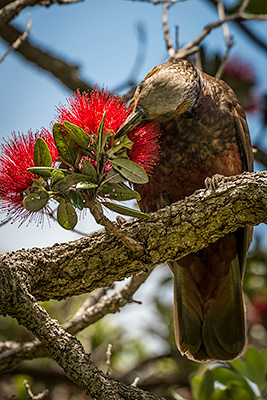 | 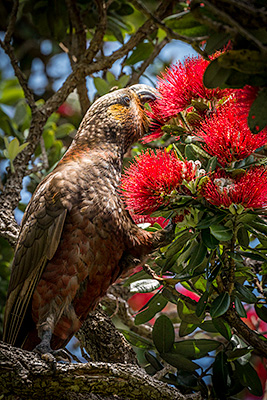 |
| Like Tui and Bellbirds, Kaka have brush-like tongues efficient for collecting nectar. | |
Further on the track a band of dense bush lines the edge of the bush, about 500 metres along, there is a break in the bush. Here is a dense concentration of flax (Harakeke) beyond which are beautiful views of the sea and Kawau Island.
| A great place for a picnic - with constant entertainment. |
| A perfect day for photography, bright sun and as the limp sail of the old gaff-rigged schooner attests - no wind. |
When the Flax is in flower, there is a concentration of birds feeding on the nectar, Tui, Bellbirds, Waxeyes - and Kaka.
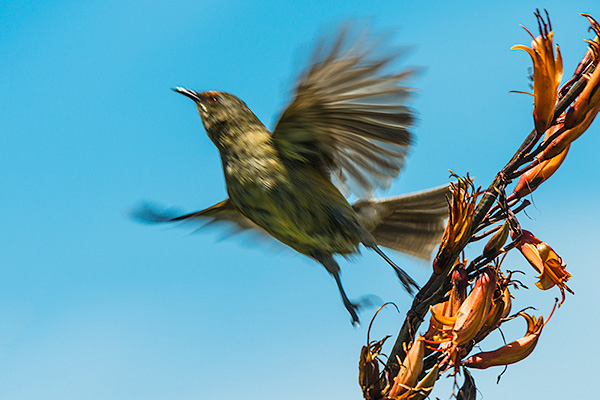 |
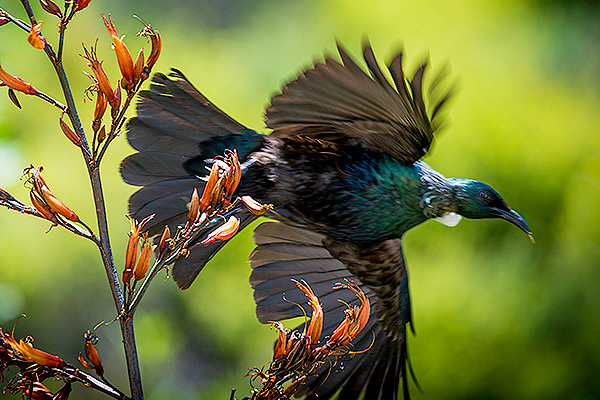 |
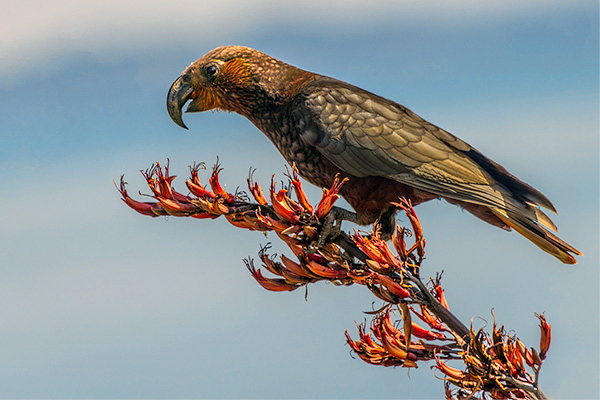 |
| Be patient and they will come... |
Part of the entertainment is to see Kaka hurtling themselves across the open space between pockets of bush with their loud distinctive ka-aa, ka-aa, ka-aa. Too quick for us to photograph - so far...


